Surfing the "Mound", Durban, South Africa
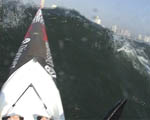 On Sunday, 4 March 2007, Gavin Searle sent me an email. “Give me a call,” he said, “some guys got
properly taken out on the Mound yesterday.
Today was cleaner – we got up to 37km/h down the face of a monster.”
On Sunday, 4 March 2007, Gavin Searle sent me an email. “Give me a call,” he said, “some guys got
properly taken out on the Mound yesterday.
Today was cleaner – we got up to 37km/h down the face of a monster.”
“Huh?” I thought, “What’s the Mound?”
The Mound
Turns out that the "Mound" is a spot just outside the harbour in Durban, South Africa some 2-3km off the beach where years of dumping by the sand dredgers has created an artificial sand bank. When incoming waves are big enough (i.e. 4-5m), they break on the Mound in spectacular fashion.
Realising that a storm system would deliver such seas at just the right time on the weekend, Durban paddlers Angus Ferguson, Ian Gray, Wesley Bartho and Matt Frizelle decided to film their attempts to surf the Mound on Saturday, 3 March 2007.
Suspecting that the waves would be too big to catch on single skis, they set off in two doubles, Angus equipped with a Head Cam - a video camera mounted in a helmet.
After a brisk 20 minute paddle, the men arrived at edge of the break zone just two hours before spring low tide. As expected the waves were huge - they estimated 3-5m - and they knew the break would become fiercer as the tide went out.
The sets normally comprise 4 or 5 waves, so Angus steered the ski in front of the second wave of a set. The forecast had the waves travelling at a 15 second interval - giving the waves speeds of up to 50km/h. The men weren't travelling fast enough to catch this one, and they had about 8 seconds to get up to speed for the next one.
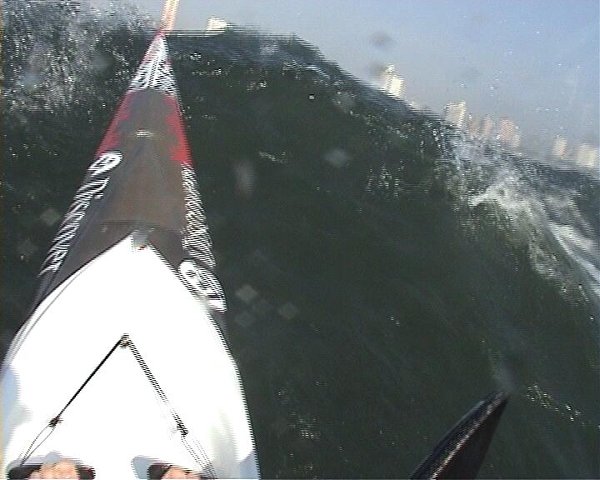
"I looked back," said Angus, "to see a black wall tinged with green from the morning sun running onto us. Ian was shouting, 'It's going to break!'".
"We ran it as fast as we could paddle," he continued, "the thundering sounds deafened us; the boat was moving at break neck speed almost vertically down the face." They lifted their blades well clear of the water; they were moving far too fast to paddle.
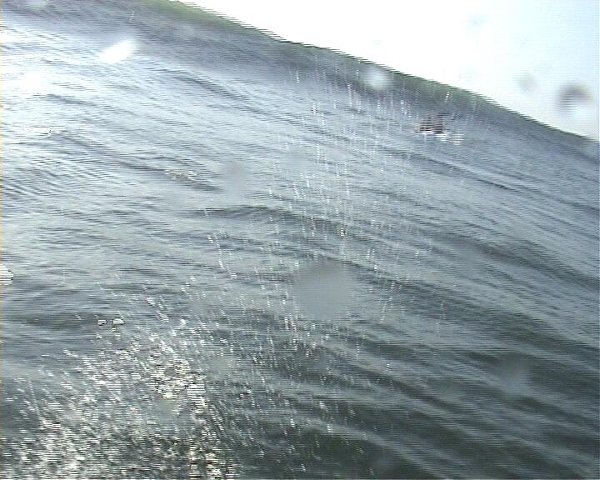
"Then," said Angus, "the 'White Room' loomed!"
The white water from the top of the breaking wave caught them up and covered them well over head height. "I realised we were getting too vertical," Angus continued, "so I dropped my feet out to create drag."
Eventually the ski emerged out of the back of the white water. "What a rush!" he exclaimed, "I was coughing up foaming water and Ian was raging out yells of joy after coming out of riding the juicy 20-25 footer!"
The other double wasn't so lucky. Wes Bartho and Matt Frizelle had charged the same wave only to pitch-pole (i.e. go arse over tip) when the nose dug in. The ski survived but had a cracked seam that was letting water in so the disconsolate pair headed off for the beach.
Angus and Ian charged back to look for another monster to tame.
The sets were jacking up 1-2 km further out to sea - which helped the paddlers to gauge when and where to charge at the waves. On one of the first runs the two were dumped and the video camera's zoom button was activated so much of the footage was wasted.
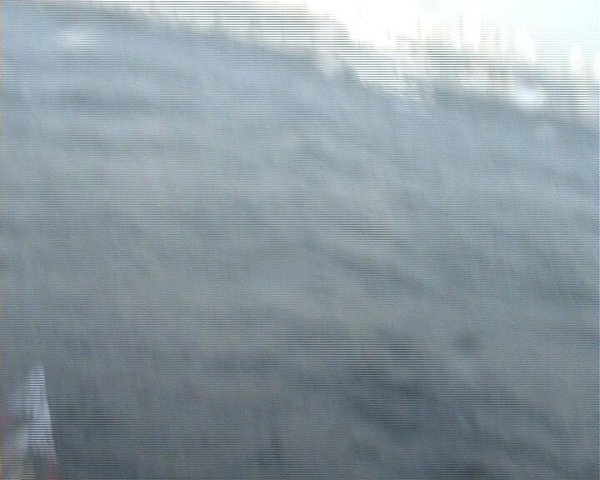
"There were a few waves where we had two double boat lengths down the face," Angus said. That gives a face of nearly 28m.
"We also rode the open side of one where it was throwing a 25ft barrel on our left! It started to throw to the right of us and I pulled out just before going over the falls,"
He added, "That wave was the best of the day, in fact my best ever on a double surf ski."
On two occasions they pulled out of waves that they judged to be well over 30ft (10m). "They were vertical at the deep point already and would just have disintegrated us."
"You can only catch these waves properly in a double," Angus said, "because your approach is faster and you can get into the right section without being caught by the break."
The lull before the storm
At that point the sets dropped off for some ten minutes and although the NE wind had picked up to 15kts, the two men moved closer to the impact zone looking for big shoulders to ride. They caught a few smoother but smaller 12 footers and then Daryn Cloete, who'd been watching from a single ski, swapped with Ian so that he could ride in the double with Angus.
By now the men had been catching the waves for nearly an hour and half and spring low tide was approaching.
Once more they headed into the second wave of a set. Angus glanced over his shoulder. "The place kind of erupted," he said later. With low tide, more waves were breaking and the sets now had 7 or 8 waves instead of 5.

"There was another massive 20 footer almost on us, so we sprinted 30m out to the side to dodge over its shoulder only to find its big brother. I gunned again for its shoulder. We made it but paddled right into the lap of its father which was already beginning to break with white water tumbling down a 15ft vertical green face. We almost broke our paddles trying to make its shoulder but I could see we weren't making it and I called out 'Dive down!' to Daryn."
The two men bailed out into the green water but the camera and PFD were hindering Angus' attempts to swim deep enough.
"With open eyes I watched the big curling surge move over me and then I felt the suction pulling me over the falls."
As he went over he popped briefly up into air and gratefully sucked a lungful before being dragged under for what seemed like an age.

"I knew my PFD and the positive buoyancy from my head cam would pop me up eventually," he said. The next few waves weren't as bad but thumped him enough that he was out of breath when the set passed.
The men swam in towards the distant shore some 2km away, initially clinging to pieces of the smashed ski. Ian, on the single ski, finally found them and assisted as much as he could.
"We were on too much of a high," laughed Angus, "to fear anything on the way in. The sea was wild - the deep line 2-3km out was a multitude of massive sets rolling in, white everywhere. What a great morning!"
"A special thanks to Clint, a Durban lifesaver who came out to collect us with a rescue jet ski when we were sighted at the normal backline."
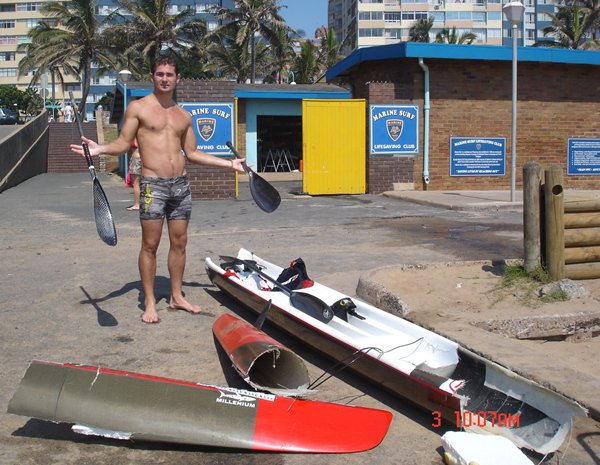
Safety Guidelines
Angus added the following safety guidelines:
- PFDs can get you stuck in big white water, but they also pop you up when you need it most.
- Always have a team with you that keeps an eye out, lifeguards can never see you at those distances.
- Be aware of the tide action at all times, be prepared!
- You will never conquer the ocean; you can certainly enjoy challenging it!

